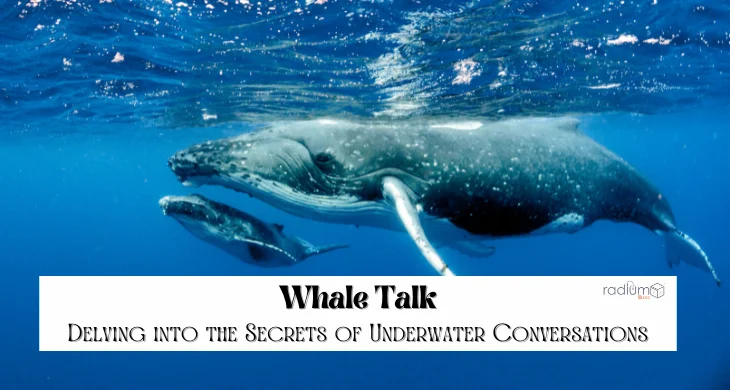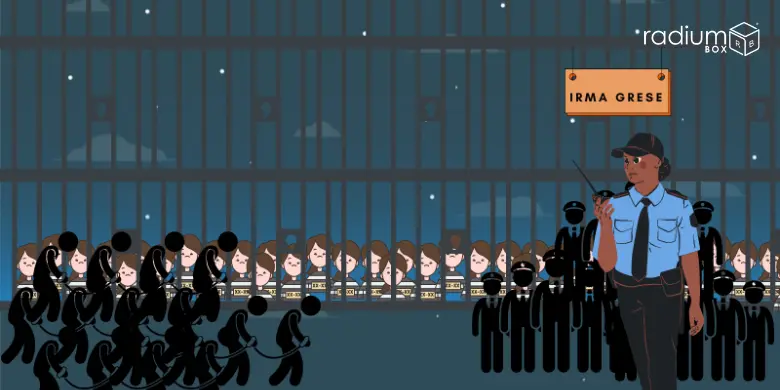In a remarkable breakthrough, researchers have embarked on an extraordinary journey into the world of whale communication, unveiling the secrets of how these majestic creatures interact. This exploration has opened a window into understanding the complexities of whale language, offering insights into their social dynamics and intelligence. Join us as we delve into this fascinating discovery, where scientists use advanced technology to engage in conversations with whales off the coast of Alaska. Through careful analysis of whale sounds and behaviours, we aim to unravel the mysteries of their underwater communication and gain a deeper appreciation for the wonders of the ocean realm.
Encountering the Whales
Setting sail off the shores of Alaska, a dedicated team of scientists embarked on a groundbreaking expedition to connect with humpback whales. Armed with cutting-edge technology and underwater speakers, they ventured into the depths of the ocean, eager to engage in an unprecedented interaction. As their research vessel bobbed gently on the waves, the researchers played recordings of humpback whale calls, hoping to capture the attention of these magnificent creatures. To their astonishment, one humpback named Twain responded, signaling the beginning of a remarkable dialogue between humans and whales.
With bated breath, the researchers observed as Twain approached the vessel, circling it with graceful movements. As the sound of his echoing calls reverberated through the water, a sense of wonder filled the air. Through this extraordinary exchange, the scientists gained invaluable insights into the behavior and communication patterns of humpback whales, paving the way for further discoveries in the field of marine biology. This encounter marked a significant milestone in our quest to understand the complex and mysterious world of marine life.
Deciphering the Language
Scientists explore the complex world of underwater sound to understand whale communication. By meticulously studying the diverse array of vocalizations produced by whales, researchers endeavor to unlock the secrets hidden within their calls. These sounds, ranging from melodious songs to intricate patterns reminiscent of Morse code, provide valuable clues about the intelligence and social interactions of these magnificent marine mammals.
Through careful analysis, scientists seek to decipher the underlying meanings encoded within these complex vocalizations. Each sound carries its own unique message, conveying information about everything from navigation and hunting strategies to social bonds and mating rituals. By piecing together the puzzle of whale language, researchers gain deeper insights into the behavior and communication patterns of these enigmatic creatures.
As scientists continue to explore the vast expanse of the ocean and study the language of whales, they inch closer to understanding the rich tapestry of life beneath the waves. Each new discovery brings us closer to unraveling the mysteries of the deep and forging a deeper connection with the captivating world of marine life.
The Role of Technology
Technology is an asset in the field of interpreting whale communication, helping researchers in their effort to comprehend the language of these amazing creatures. Advanced technologies, such as artificial intelligence (AI) and machine learning, are employed to analyze the intricate sounds emitted by whales with unprecedented accuracy and precision.
Using sophisticated algorithms and data analysis techniques, scientists sift through vast amounts of acoustic data collected from underwater recordings. These technologies allow researchers to identify patterns, discern meaningful signals from background noise, and decipher the nuanced nuances embedded within whale vocalizations.
Through the application of AI and machine learning, researchers can uncover hidden insights into the communication patterns of whales, shedding light on their social interactions, navigation strategies, and even emotional states. By harnessing the power of technology, scientists hope to unlock the secrets of whale language and gain a deeper understanding of these fascinating marine mammals.
Our ability to investigate and appreciate the complexity of the aquatic world is growing along with technology. We are getting closer to understanding whale communication and developing a stronger bond with the aquatic world with every new technological development.
Implications for Conservation
The insights gained from understanding whale communication extend far beyond the realm of scientific curiosity, carrying profound implications for conservation efforts aimed at protecting these majestic creatures and the delicate ecosystems they inhabit.
Whales are essential to keep marine ecosystems in balance. By deciphering their language, researchers can gain valuable insights into their behaviors, social structures, and interactions with their environment. This knowledge is instrumental in identifying key areas for conservation and implementing effective measures to safeguard whale populations and their habitats.
Furthermore, understanding whale communication enables us to recognize the interconnectedness of marine life and the broader ecosystem. Whales serve as indicators of ocean health, reflecting the state of the environment and the impacts of human activities such as pollution, habitat destruction, and climate change. By listening to the language of whales, we gain a deeper appreciation for the intricate web of life in our oceans and the urgent need to protect it for future generations.
Conservation efforts informed by our understanding of whale communication can lead to the implementation of policies and initiatives aimed at mitigating threats to whale populations and preserving their natural habitats. By advocating for marine protected areas, regulating human activities in whale habitats, and promoting sustainable practices, we can work towards ensuring the long-term survival of these magnificent creatures and the health of our oceans.
Whale Social Dynamics
Whales are highly friendly creatures that live in close-knit groups known as pods. The interactions and behaviours within these pods are controlled by challenging social dynamics, which reflect the intricate relationships among each whale. The care of young calves by whales is one of the most amazing aspects of their social dynamics. Mother whales provide exceptional nurturing and safeguarding to their young, assisting them in adolescence and providing valuable survival knowledge.
Whales also exhibit cooperative behaviours, especially when they are hunting. Some whale species, like orcas, have developed complex hunting techniques that require group members to work together to successfully catch prey. As people collaborate to achieve common objectives, these cooperative behaviours demonstrate the close relationships and open communication that exist among whale groups.
Whales also communicate socially through a variety of means, including as vocalizations, body language, and physical encounters. These communication techniques are essential for preserving the pod’s social cohesiveness and encouraging collaboration when engaging in group activities. Researchers may learn a great deal about the intricate social dynamics and communication of whales, which helps them better comprehend the intricate social structures and behaviours of these amazing marine mammals.
Preserving the Ocean Symphony
Preserving the ocean symphony entails confronting the critical conservation challenges that threaten whales and their marine environments. One of the foremost concerns is habitat degradation, which occurs due to human activities such as pollution and coastal development. These activities disrupt the delicate balance of marine ecosystems, affecting the availability of food and safe breeding grounds for whales.
Pollution poses another significant threat to whale populations, as marine debris and chemicals can harm whales directly through ingestion or entanglement. Additionally, the impacts of climate change, such as rising sea temperatures and ocean acidification, further exacerbate the challenges faced by whales and their habitats.
To address these pressing issues, proactive conservation measures are essential. This includes initiatives to reduce pollution, mitigate climate change impacts, and establish marine protected areas to safeguard critical whale habitats. Furthermore, public awareness and advocacy play a crucial role in garnering support for conservation efforts and promoting sustainable practices to preserve the ocean’s biodiversity.
By taking concerted action to protect whales and their marine environments, we can ensure the continuation of the ocean symphony for future generations to cherish and enjoy.
Looking to the Future
We are reminded of the connectivity of all life forms on Earth as we continue to explore the mysteries surrounding whale communication. By learning to listen to whale sounds, we take a deep dive into the natural world and develop a strong sense of oneness with it.
Whales, as magnificent beings of the ocean, offer us valuable insights into the complex web of life that sustains our planet. Their communication patterns reflect not only their intelligence but also their interconnectedness with other species and their environment.
Listening attentively to the voices of whales allows us to appreciate the wonders of the ocean in a new light. It opens our hearts and minds to the beauty and diversity of marine life, inspiring us to become better stewards of our planet.
Through this journey, we gain a deeper understanding of the importance of preserving marine ecosystems and protecting the habitats of whales and other marine creatures. By working together to conserve our oceans, we can ensure a harmonious coexistence between humans and the natural world, fostering a sustainable future for generations to come.
Conclusion
Understanding whale communication is an exciting and fascinating adventure that provides insight into a world far from our own. We go out on an exploration of comprehension and admiration for the great variety of life on Earth as we work to decipher the language of these amazing animals.
Frequently Asked Questions
Que: What is “Whale Talk”?
Ans: “Whale Talk” refers to the study and exploration of communication patterns and behaviours exhibited by whales underwater.
Que: Why are scientists interested in delving into the secrets of underwater conversations?
Ans: Scientists are intrigued by whale communication as it offers insights into the intelligence, social dynamics, and behaviours of these marine mammals.
Que: What are some methods used to study whale communication?
Ans: Researchers use advanced technologies such as underwater speakers, hydrophones, and recording devices to study and analyze whale vocalizations and behaviours.
Que: What are the potential implications of understanding whale communication?
Ans: Understanding whale communication can contribute to conservation efforts, improve our knowledge of marine ecosystems, and foster a deeper appreciation for marine life.
Que: How do whales communicate underwater?
Ans: Whales communicate through a variety of vocalizations, including songs, clicks, and pulses, which they use for social interaction, navigation, finding mates, and hunting prey.




